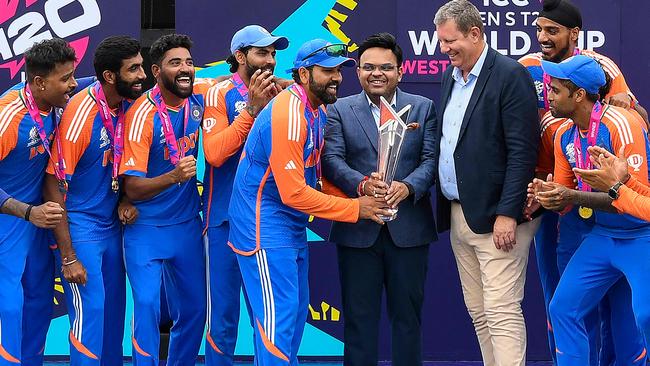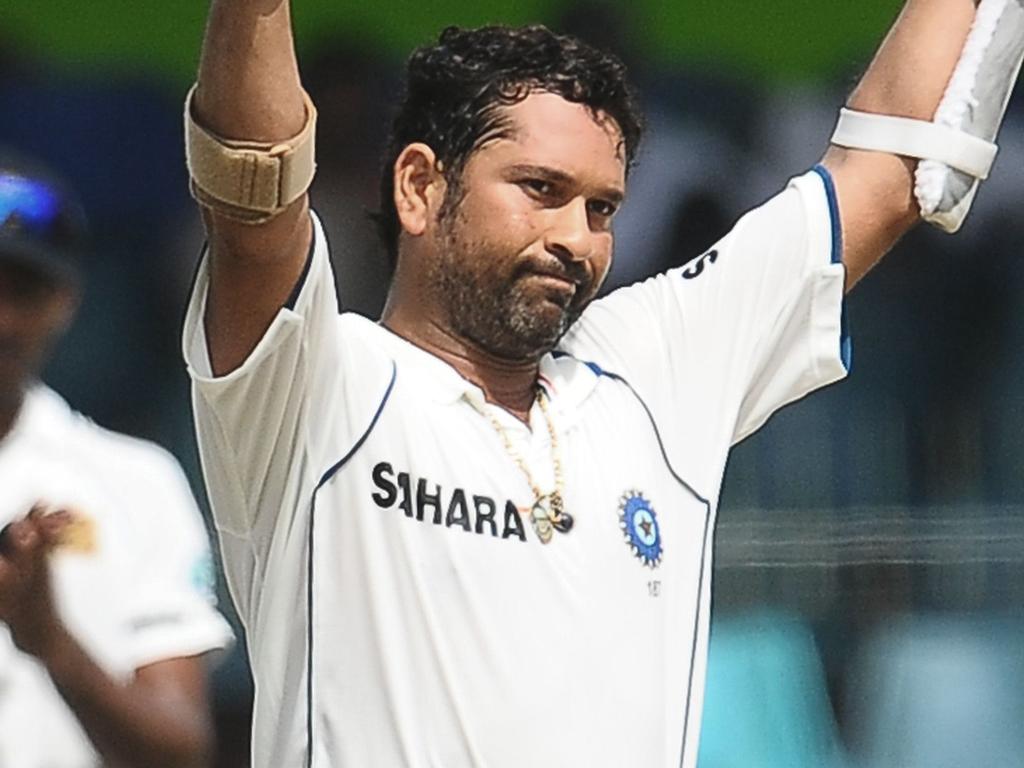The ‘Grinch’ who could save Test cricket
Those who think the BCCI is ruining Test cricket should understand the culture clash before rushing to judgement.

Jay Shah was everywhere at the Kensington Oval that afternoon. India had just won their first World Cup of any kind in 13 years. While Rohit Sharma and his team were understandably swept away by the emotion of the moment, so was Shah as he ran on to the field within seconds of the final delivery being bowled.
Donning an untucked white shirt and black formal trousers, he sprinted around the Oval either hugging his players or being carried in their arms. And the secretary of the Board of Control for Cricket in India (BCCI) watched on proudly as Rohit planted an Indian flag into the grass on the outfield in Barbados, just like Shah had “predicted” he would a few months prior.
Within the next 20 minutes, Shah was on the presentation ceremony podium, now donning a grey suit and in a more official capacity, holding the World Cup trophy aloft before handing it to the Indian captain. Standing next to him was Greg Barclay, the man he’ll be replacing as ICC chair at the end of this year.
He wasn’t done yet. Shah was soon back in the Indian dressing-room, making sure every one of the senior players had posed for a picture with him and the trophy on the balcony. Even if it meant the international media was made to wait endlessly for Rohit to start his press conference.
Shah’s “carrying on” – to use an Aussie expression – that afternoon was interesting viewing even for me as someone who understands India. But I was even more intrigued by what my Australian and English colleagues made of it. This was after all a senior cricket administrator. Not a player or coach. Not a former cricketer either. For them, this was akin to watching Nick Hockley leaping into Pat Cummins’ open arms at the Narendra Modi Stadium in Ahmedabad last November after Australia won the 50-over men’s World Cup.
No surprises that their reactions were a mix of shock and bemusement. On the face of it, it wasn’t too difficult to understand their raised eyebrows and rolling eyes. This was the poster boy of Indian cricket’s unchallenged might as the powerbrokers of the sport, rubbing it in after his team had won a world event that according to many was designed for them to be victorious.
But I couldn’t at the same time wonder how much of it came down to the unmistakeable cultural chasm that exists between Indian cricket and the Western world, to use the term loosely, when it comes to how our sport should be run.
It’s been very prevalent in how the narratives around Shah being elected unopposed as the next ICC chair have been skewed in one extreme direction or the other. To put it simply, they seem divided on one straightforward point. Jay Shah: mastermind or world cricket grinch?
Before you have a concrete opinion either way, maybe it’s important to understand India a bit better. To start with, it’s not a homogenous nation. At least in terms of how differently power and the sharing of wealth work there as compared to the more egalitarian societies such as Australia or England, who held the reins in the past. To start with, it’s a society that is inherently divided along many lines, where to put it mildly, nothing is shared equally.
This is not to condone it but to try to get your head around it. I’ve tried explaining it to my Australian colleagues in the past about how India runs cricket like it’s a kingdom. That’s the understanding anyway. Wherein the focus, as is well-publicised, is on ensuring that they get wealthier while maintaining the status quo in terms of power. At the same time, they also aim to try to make sure every other country or cricket board also grows its income, but not at the level that India does. For, that concept doesn’t exist for them. That too in this unprecedented time in cricket, where a single country is so heavily responsible for the money that comes into the sport.
The view that the BCCI is intentionally ruining world cricket for its own benefits is one many within the corridors of power in Indian cricket simply cannot fathom. It’s very similar to how many outside India simply cannot fathom why the BCCI wouldn’t want to share the bounty more evenly for the overall benefit of the game. While it is a clash of ideology, it’s also a clash of cultures.
“Aren’t Zimbabwe making three times more than what they did before India began having a bigger say? Why does it matter to them how much we make,” is one such argument that I’ve heard a lot. For the record, their players tour Zimbabwe almost every alternate year. In fact, an Indian team was in Harare playing a handful of T20Is, while the World Cup-winning squad was in Mumbai being mobbed by thousands this July. Similarly, for example, India tours the Caribbean and Sri Lanka regularly. But that is also part of how the Indian idea of sharing the wealth works. Unlike how it does in the West.
It’s the same with power as well. There is no denying the fact that Shah’s takeover as ICC chair is India’s unofficial consolidation of control over world cricket.
Not that anyone has been under the impression that most of the decisions around international cricket haven’t been made from the offices of the BCCI in Mumbai for a considerable amount of time anyway. There is enough to support the scepticism around his appointment as well though. Never before have cricket and politics been so intertwined in India as they are presently. And only Shah’s actions over the next few years can erode the innate idea of nepotism in terms of how he even came into the cricket fold.
Eventually what Shah does with his role at the helm of the ICC’s affairs will come down to not who he is but what he actually does with it. To see if he can actually follow through on his promise to bring in the Test Match Fund that will take a huge load off other struggling nations when it comes to hosting and sustaining the traditional format. To see if he can genuinely grow the game as he and his backers constantly insist that they want to.
The fact remains that even if it does happen, it won’t still look or feel the way the dissenting voices from England or Australia want it to. For, like with everything else in this case, the culture clash will be unavoidable.
Maybe it will come down to both sides making the effort to understand each other and where they come from rather than simply being dismissive and unwavering with their views.






To join the conversation, please log in. Don't have an account? Register
Join the conversation, you are commenting as Logout